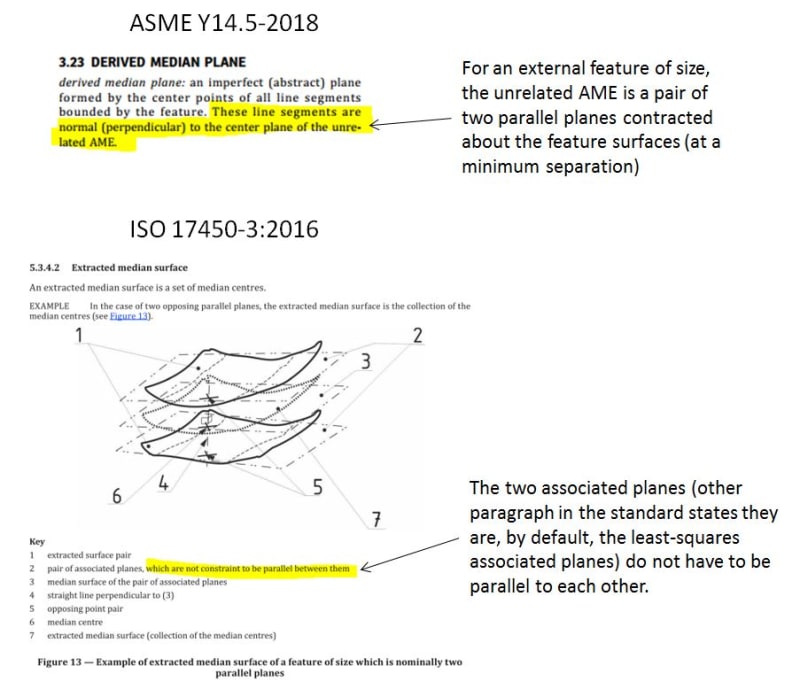MaxSka9
Mechanical
- Apr 23, 2024
- 9
After a drawing review concerning a print with a callout of flatness of a feature of size as pic related we were told by the manufacturer that it’s impossible to verify. Essentially that flatness of a derived median plane/feature of size is not possible and that we should specify one plane as datum A with flatness and the other plane to be parallel to A. That is an option for sure, but in my opinion flatness of DMP better captures the intent as I can live with some bending of the part as long as the derived median plane is within tolerance.
As both my company and our manufacturer use ISO, rule 1 does not apply here, so size does not control form. I know flatness of a feature of size is allowed in ASME 14.5 2009 and beyond, but I can’t seem to find anything about it in either ISO 1101 or ISO 12781. Neither if it’s allowed or if it’s prohibited, so we’re kind of stuck between a rock and a hard place.
Their inspection guy thinks I’m an idiot, and I think he’s an old geezer that just hates when “the new guy” use something different to what he’s used to.
If someone could settle this debate I would be eternally grateful
As both my company and our manufacturer use ISO, rule 1 does not apply here, so size does not control form. I know flatness of a feature of size is allowed in ASME 14.5 2009 and beyond, but I can’t seem to find anything about it in either ISO 1101 or ISO 12781. Neither if it’s allowed or if it’s prohibited, so we’re kind of stuck between a rock and a hard place.
Their inspection guy thinks I’m an idiot, and I think he’s an old geezer that just hates when “the new guy” use something different to what he’s used to.
If someone could settle this debate I would be eternally grateful

![[bigsmile] [bigsmile] [bigsmile]](/data/assets/smilies/bigsmile.gif)
